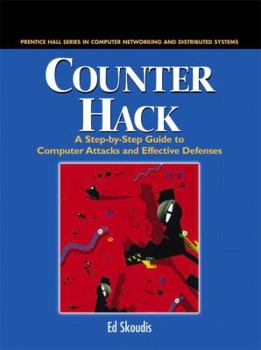Counter Hack: A Step-by-Step Guide to Computer Attacks and Effective Defenses
Select Format
Select Condition 
Book Overview
Empowers network and system administrators to defend their information and computing assets. This guide presents explanations of destructive hacker tools and tactics - and specific counter measures... This description may be from another edition of this product.
Format:Paperback
Language:English
ISBN:0130332739
ISBN13:9780130332738
Release Date:January 2002
Publisher:Prentice Hall PTR
Length:564 Pages
Weight:2.50 lbs.
Dimensions:9.2" x 1.5" x 7.0"












